7 Essential Tools for Roasting Like a Pro
Roasting is one of the most basic cooking practices, but probably the one we turn to the most. This hands-off technique involves cooking food – be it a large pork loin roast or broccoli florets – in an uncovered pan in the oven. As opposed to braising or stewing, roasting is a dry cooking technique that allows food to develop a crisp, golden crust all around on meats and poultry. Whether you’re a novice looking to step up your game or a seasoned cook who wants to refine their skills, you will need the right tools for roasting. From a reliable meat thermometer (yes, we all should use one!) to a platter for serving your centerpiece-worthy roast, Food & Wine has you covered. Here, our must-have essentials for roasting like a pro.
Instant-Read Meat Thermometer
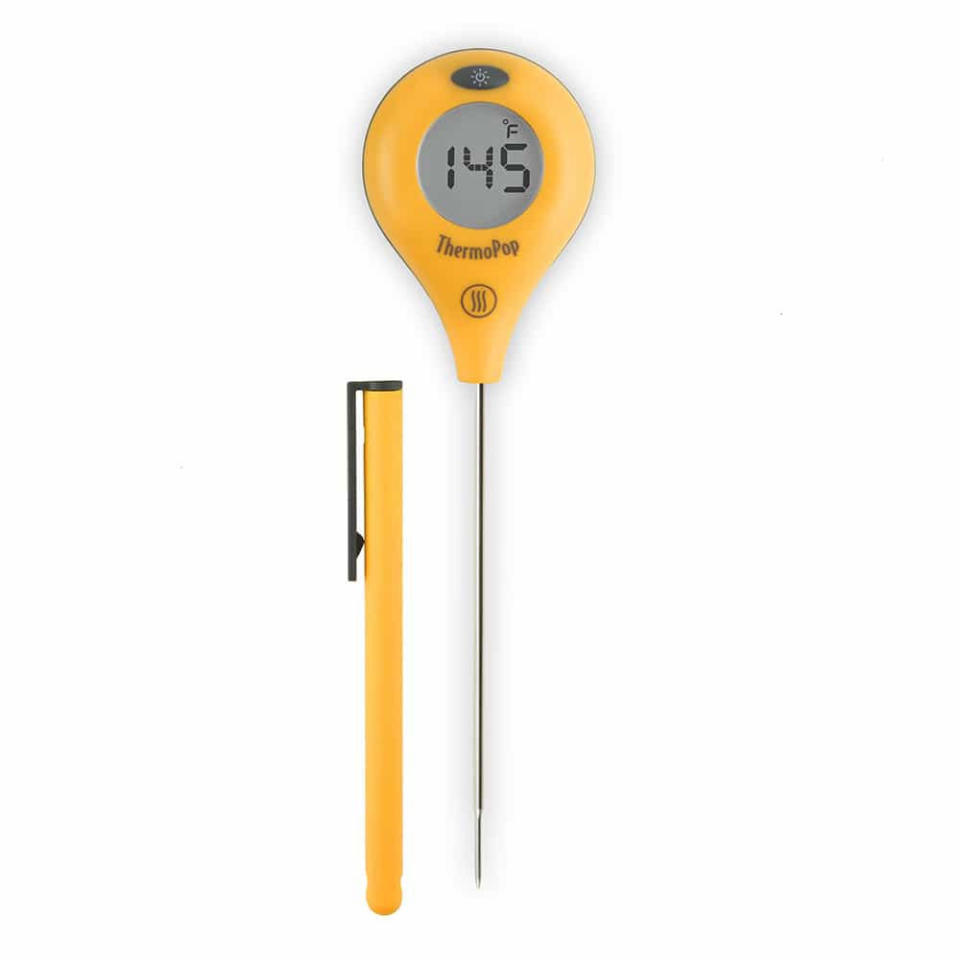
If you’re roasting a Thanksgiving turkey, a beautiful beef tenderloin or a pricey bone-in rib eye, the last thing you want to do is make a big slice right into the middle of your meat to see if it’s done. Not only does this make you look like a newbie, but now you’ve ruined your expensive piece of meat. An instant-read thermometer can accurately and quickly test the internal temperature of the meat and determine its doneness. This also keeps all of those precious juices inside– cutting into it before it has had time to rest causes all of those juices to flood out, drying out your meat. The ThermoPop Thermometer is lightweight, affordable and can determine the internal temperature in seconds. For large roasts, a thick-cut pork chop or a tenderloin, insert the thermometer about half-way into the thickest part of the meat. You’re looking for 145º for pork and about 130º to 135º for medium rare beef or lamb. For chicken or turkey, insert the thermometer into the densest part of the bird – between the thigh and the breast. Be careful that you’re not touching bone as this can give you an incorrect reading. You are looking for 165º for perfectly done poultry. Remember: your meat will continue to cook while it’s resting. So, to ensure that it’s perfect inside, stop cooking your meat about 5º shy of your desired internal temp.
ThermoPop Thermometer, $34 at thermoworks.com
Cooking Twine
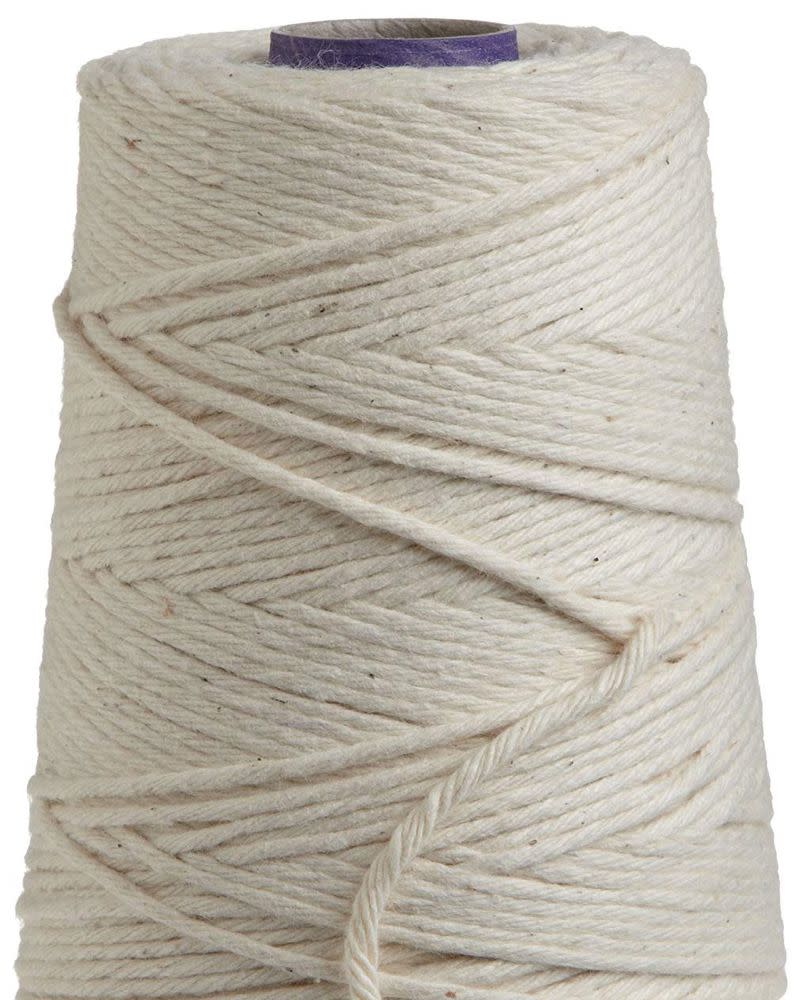
Trussing your meat is important when you’re cooking something that is unevenly shaped or if you are stuffing it and want all of those flavorful ingredients to stay inside. By tying your meat together with cooking twine, it creates a uniform shape and helps your meat cook more evenly. We like to use a cotton, 16 ply string because it is affordable, strong enough to keep even a giant crown roast in place and won’t cut into your meat like thinner strings. Plus, it’s also great to have around the home for gift wrapping, flower arrangements and even binding your recycling together. For a guide on how to truss a roast like a pro, check out this video.
Regency Natural Cooking Twine (500 ft.), $5 at amazon.com
Roasting Pan
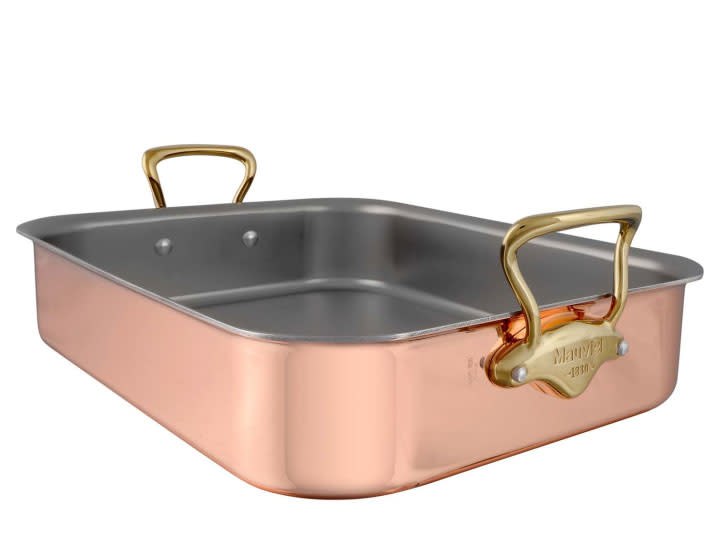
For the consummate host, a heavy-duty roasting pan with a roasting rack is a must. A roasting pan has low sides, allowing the heat in the oven to move freely around the meat. You want something with thick metal walls because it will distribute heat more evenly (and reduce the chances of your food burning) and can then go right on your stovetop when you want to turn those pan drippings into gravy. We love the elegant and reliable copper roasting pans from Mauviel, but there are also less expensive and reliable stainless-steel roasting pans. (See here for our favorite sheet pans for roasted vegetables).
Calphalon Tri-Ply Stainless Steel Cookware, Roaster, 14-inch, $105 (was $140) at amazon.com
Mauviel M’héritage 150b Roasting Pan, $270 (was $340) at surlatable.com or at amazon.com
Large Cast Iron Skillet
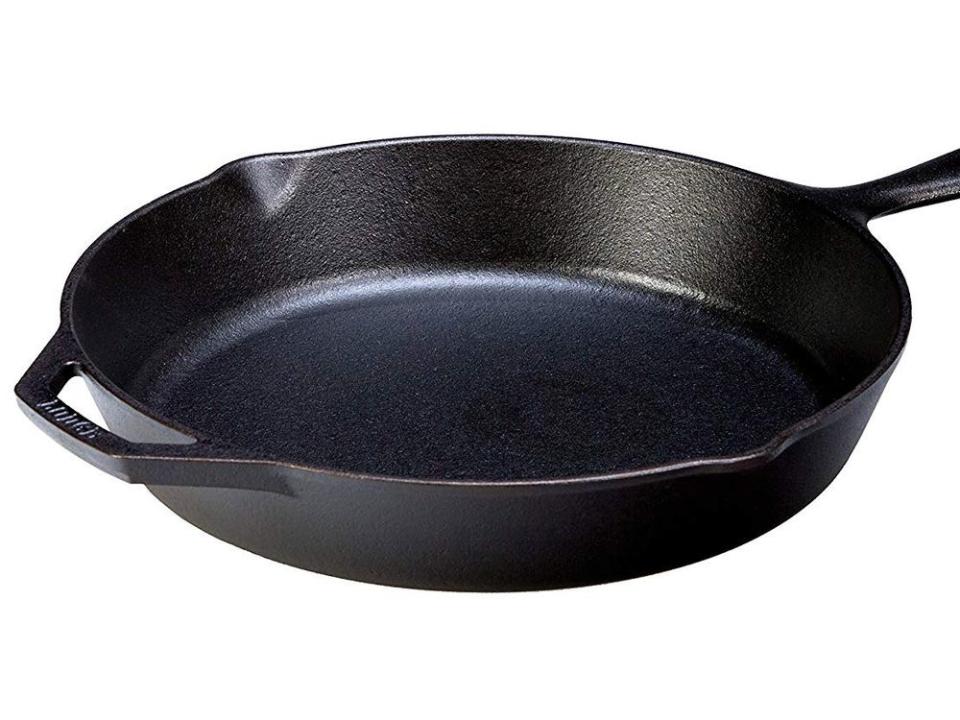
For smaller pieces of meat like a chicken, pork tenderloin or even a whole head of cauliflower, a cast iron skillet is all you need for the job. Just like a roasting pan, it has low sides, allowing air to circulate, and thick walls so the heat distributes evenly. It’s also great for cuts like bone-in pork chops or a thick-cut New York Strip because you can sear your meat on the stove top and then transfer the skillet directly to the oven to finish cooking. This technique gives you a seared, flavorful crust on the outside, while the even heat of the oven guarantees a consistently cooked interior.
Lodge 12-inch Seasoned Cast Iron Skillet, starting at $30 at amazon.com
Carving Board
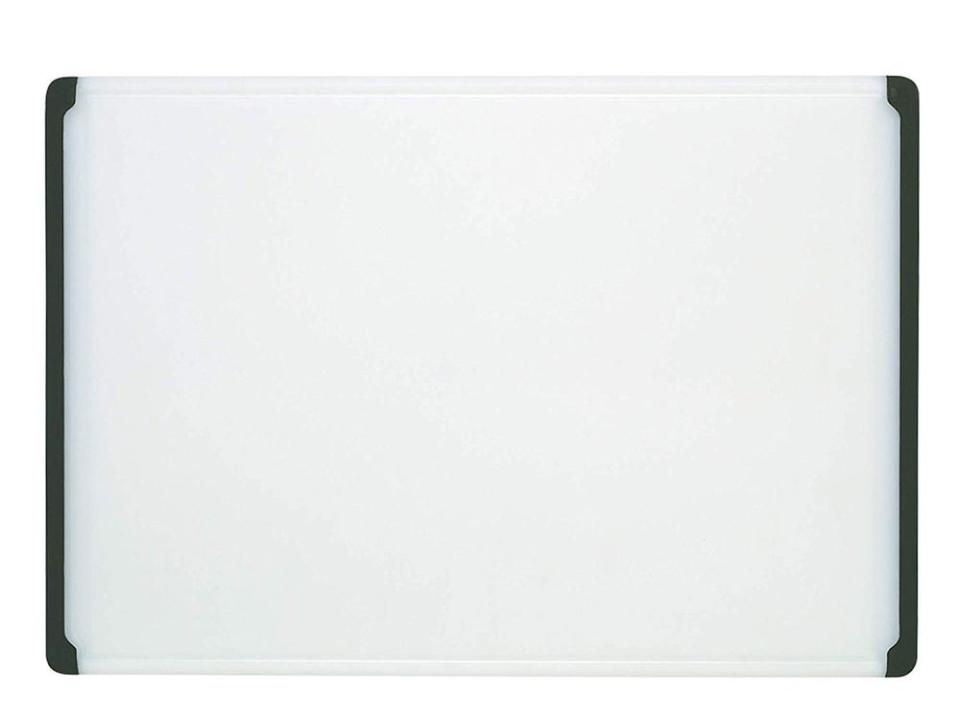
A table-worthy wood carving board is an investment piece that will last you a lifetime and looks great on your dinner table. However, when it comes to everyday cooking and roasting, we prefer a plastic cutting board like this one from OXO. The plastic is easier to clean and sanitize for food safety, allowing you to use it for both prepping your meat and carving your roast (we’re all for less dishes). This board has a large surface area, rubber grips on the sides to keep it in place and a moat to collect any juices. It’s also lightweight and easy to pull out for quick cooking jobs.
OXO Good Grips Carving Board, $25 at amazon.com
Carving Knife
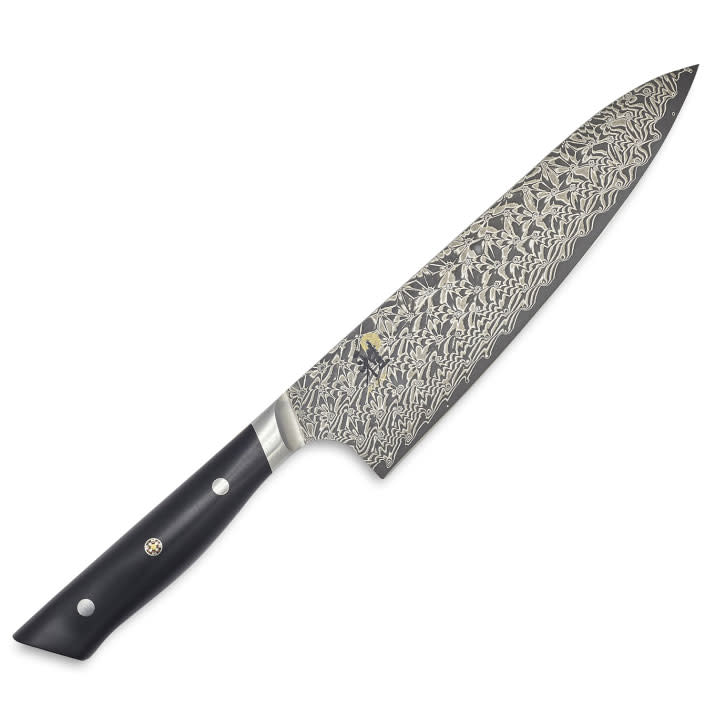
Carving is the last step when it comes to preparing your roast – don’t butcher it (pun intended!) with a dull knife. There’s a time and place for a beautiful carving set, but in our opinion a quality 8- to 10-inch chef’s knife will do the trick. (See: The Best Chef’s Knives) The longer blade makes it easier to get clean, smooth slices. Anything smaller will require more of a sawing motion, shredding the meat. A chef’s knife is also more multifaceted than a carving set because it can be used for prepping and trimming your roast, in addition to any other chopping or slicing you have to do. The Miyabi Hibana chef’s knife has a manageable 8-inch blade made with 49 layers of forged steel, creating a ridiculously sharp and durable blade. Plus, it’s just as pretty to look at as a formal carving set! For the best way to carve a turkey (works for a chicken, too!), check out our guide here.
Miyabi Hibana Chef’s Knife, $150 at surlatable.com
All-Purpose Serving Platter
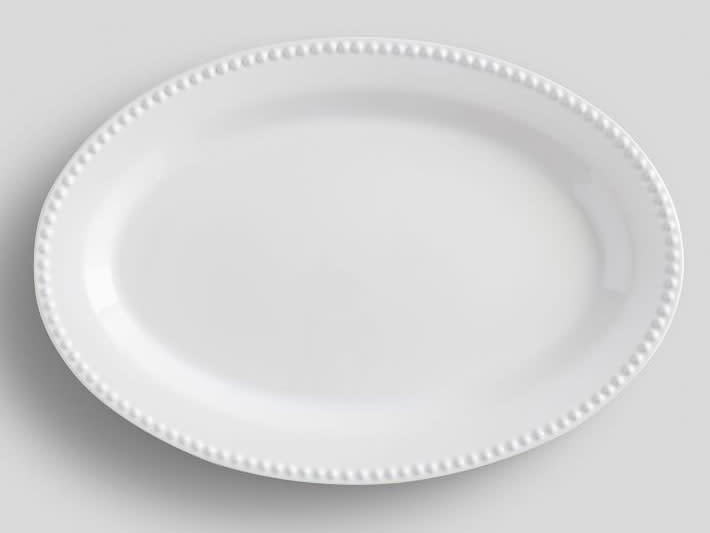
When it comes time to serving your roast, look for a platter that is oven-proof so you can warm it beforehand (rule of thumb: hot food should go on warm platters and cold food on chilled platters! This will help your food stay its desired temperature longer.). This classic 16-inch platter from Pottery Barn is universal – use it for your Thanksgiving Turkey, an Easter leg of lamb or even a Sunday night roast chicken.
Emma 16-inch Oval Serving Platter, $36 (was $49) at potterybarn.com

